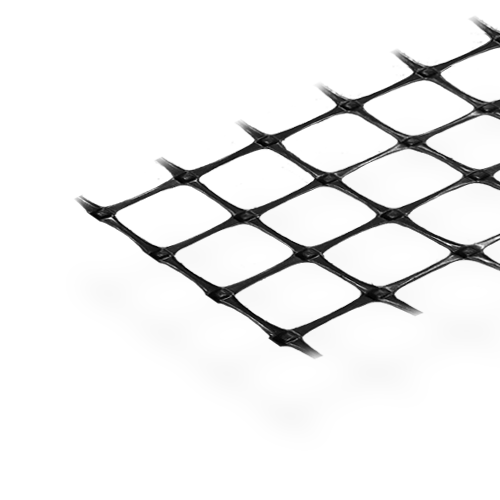Trade Depot Development – DuraGrid X Geogrid & DuraForce® AS Geotextile
Project Details
Contractor
Client
Engineer
Location
Cirtex Regional Contact
Project Information
Within the Titanium Park commercial development near Hamilton Airport, Trade Depot were looking to build a 30,000 m2 warehouse. The site consisted of dense sands overlain by a layer of silty loam. The dense sand gave a predictable foundation strength, but the silty loam was looser and did not provide the required foundation strength. An initial design involved removing the entire silt loam layer, about 18,000 m3 of soil and replacing it with an imported aggregate layer. This required a lot of cartage and quarried aggregate being brought into the site. As an alternative, the contractor approached Cirtex about removing and replacing a 300 mm layer of loam with an imported aggregate on a stiff, polypropylene geogrid. This would save 13,500 m3 of quarried aggregate, along with 27,000 m3 of cartage. Cirtex proposed using DuraGrid X 30/30, over a separation geotextile layer of DuraForce AS280, but the contractor was still unsure whether this would give the required support to the industrial floor foundation.
DESIGN
Working closely with the design engineer to identify what output they needed, and to achieve the required performance data to ensure that this application would work, a trial embankment was created on-site. Common on large infrastructure projects, this was rare for a smaller industrial or commercial development and allowed everybody involved to quantify the actual stabilisation impact of the geogrid within the site’s foundation.
Plate Load Tests (PLT) and Lightweight Deflectometer (LWD) tests were done on the dense-sand lower foundation, the silty loam layer, and the raft trial section. From those results, the geotechnical engineer was able to give the building designers an accurate modulus of subgrade reaction and stiffness on each layer. The tests proved that a 300 mm layer of aggregate working in conjunction with the geogrid provided a similar modulus as replacing the entire area with engineered fill.
INSTALLATION
Having shown that this application and design would work, a 300 mm layer of silty loam was removed and replaced with a layer of GAP65 placed on the DuraGrid X 30/30, over a separation geotextile layer of DuraForce AS280. With the subgrade layer levelled, both the DuraForce and DuraGrid X were rolled out in overlapping rows across the site, with the GAP65 layer placed on top as they went.
The contractor saved the 13,500 m3 of quarried resource, and the 27,000 m3 of cartage to and from the site. This represented a significant environmental benefit as well a benefit to local roads and residents. It also gave substantial cost savings. And although saving money on a site with geosynthetics is not a new concept, a key benefit of setting up the trial embankment was being able to quantify the benefits of geogrid on smaller, commercial developments that are happening every day, right through the country.
The DuraGrid X and DuraForce products provide the following benefits to the project:
- Proven soil reinforcement and stabilisation
- Substantial cost savings on site
- Separation of subsoil and aggregate layers






